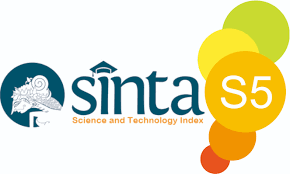PERANCANGAN KORI AGUNG
Abstract
Traditional Balinese architecture is a masterpiece born of a tradition, belief and spiritual activity of Balinese people embodied in various physical forms such as traditional houses, shrines, meeting halls and others. The birth of various physical manifestations is also caused by several factors, namely geographical, cultural, cultural and socio-economic conditions. Kori Agung as part of Balinese traditional architecture, is one of the entrance types passed down from generation to generation by our ancestors which is a manifestation of Hindu that underlies trust, custom as the norms of life. So there is an effort to preserve it so that the cultural values contained in it do not become faded.Along with the development of time, some demands emerged from the needs of people living towards the entrance, this paper will discuss matters relating to the layout, materials, size and also the philosophical value of the kori agung. By using comparative methods and analysis of several case studies are expected to provide answers to the differences and similarities of the physical manifestation of kori agung in BaliKeywords : kori agung, philosophy , physical formReferences
Anonim, Asta Kosali L 05 T Asal Pedanda Made Sidemen asal Grya Taman Sanur Badung Terjemahan N gelebet 35 Halaman Koleksi BIC Bali.
Anonim, Selayang Pandang Pura Taman Ayun.
Acwin Dwijendra, Ngakan Ketut, Arsitektur RumahTradidional Bali di Ranah Publik, CV Bali Media Adhikarsa, Denpasar, 2010 .
Adnyana, Ida Bagus Putra, Tugas SATB I.
Bandesa, K, Tonjaya, I Nym Gd, Riwayat Mpu Kuturan Penerbit Percetakan dan Toko Buku “Riaâ€, Denpasar.
Murdana, I Made, 2002 Tugas SATB III.
Putra, I Gusti Made, Pengetahuan Arsitektur Tradisional Indonesia II, 1996.
Pusat Pembinaan dan Pengembangan Bahasa, Kamus Besar Bahasa Indonesia, Penerbit Balai Pusaka, Jakarta 1988.
Semara Jaya, Tugas SATB I.
Suandra, I Made; Himpunan Ulap ulap Pelinggih, Upada sastra, Denpasar.
Suandra, I Made; Tuntunan/Tata Cara Ngwangun Karang PaumahanbManut Smrti Agama Hindu, 57 halaman.
Warsika, I Gusti Made, Selayang Pandang Kerta Gosa, 1986.
Yoga Andhika I Putu, 2012 Tugsa SATB II












